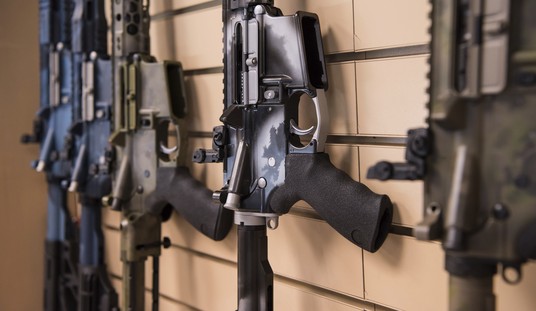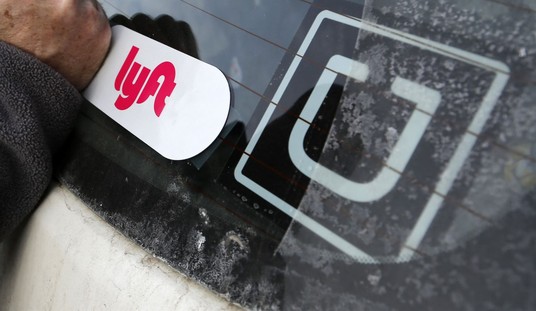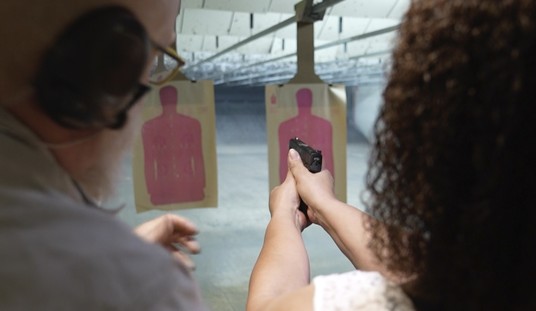While the U.S. Supreme Court apparently doesn’t want to hear any Second Amendment cases at the moment, lower courts on both coasts have been busy this week, with decisions coming down from district judges and courts of appeals in challenges to California’s ban on open carry, Washington State’s ban on so-called assault weapons for 18-20 year olds, and New Jersey’s ban on magazines that can accept more than ten rounds of ammunition. While none of these cases appear to be heading directly to the Supreme Court at the moment, all of them could eventually reach SCOTUS after the November elections, and possibly even after the makeup of the Court itself has changed.
In Baird vs. Becerra, plaintiffs Mark Baird and Richard Gallardo argue that the state’s ban on openly carrying a firearm violates not only the Second Amendment, but also their rights guaranteed by the Fourth and Fourteenth Amendments as well. On Monday, U.S. District Court Judge Kimberly Mueller ruled that the case can go forward, but as Courthouse News reports, she declined to issue an injunction that would block the ban on open carry from being enforced while the case is being adjudicated.
Mueller, a Barack Obama appointee, noted a Ninth Circuit panel ruled in 2018’s Young v. Hawaii that the Second Amendment “encompasses a right to carry a firearm openly in public for self-defense” and the right is “core” to the Second Amendment. However, since Young will now be heard by an en banc Ninth Circuit, Mueller is not currently bound by the original ruling.
“Thus, no controlling authority has held that the Second Amendment right protects an individual’s right to open carry. However, where ‘difficult legal questions require more deliberate investigation,’ the court may grant a preliminary injunction to preserve the status quo so long as plaintiff demonstrates ‘that serious questions going to the merits were raised,’ ‘the balance of the hardships tips sharply in the plaintiff’s favor,’ and plaintiff meets the other requirements,” Mueller wrote.
Mueller agreed the men raise “serious questions” regarding their Second Amendment claims that require further consideration. But since then Ninth Circuit is likely to bring more clarity to the scope of the Second Amendment in the near future — as Mueller noted, Second Amendment law is evolving — the men have “a chance if not a ‘fair chance of success on the merits.’”
The Young vs. Hawaii case is going to be a big decision, and it makes sense that Mueller doesn’t want to go out on too much of a limb given that the court may saw it off beneath her in its opinion when it’s released (which could come at any time). That case deals with a ban on openly carrying a firearm in Hawaii (theoretically the practice is allowed with a license, though none have ever been issued to the average gun owner), and therefore will have a direct impact on the Baird case. We’ll see if the Young decision, when it ever does come down, helps or hurts the Baird case. Right now I’m cautiously optimistic, in part because of the recent decision by the Ninth Circuit Court of Appeals in the California mag ban case declaring that the state’s ban was unconstitutional.
Speaking of magazine bans, earlier today the Third Circuit Court of Appeals rendered its verdict in a challenge to an almost identical magazine ban in New Jersey, and the news wasn’t nearly as good as we got from the Ninth Circuit a couple of weeks ago. In a 2-1 decision, judges decided that they didn’t have the ability to even hear the challenge, because it was in essence a duplicate of an earlier case brought against the magazine ban statutes. As the Association of New Jersey Rifle & Pistol Clubs explained to their members in an alert on Tuesday, however, all hope is not lost.
The court ruled on a purely procedural basis. It found that because a previous three-judge panel upheld the mag ban on an early motion for an injunction when the case first began in 2018, the current three-judge panel could not decide the case differently. Whether the mag ban was unconstitutional was not even considered.
In a strongly worded dissent from Trump-appointed Judge Paul Matey, the judge found fault with the majority’s reasoning. Judge Matey argued that, because the previous panel did not treat all of the issues in the case, the court was entirely free to find differently now. Judge Matey also urged that the Third Circuit should scrap its current approach to Second Amendment cases, which differs significantly from the approach emphasized in the landmark U.S. Supreme Court decision D.C. v. Heller. Judge Matey effectively suggested that the appeal should be taken up fresh by the full Third Circuit (not merely a three-judge panel) — a process known as “rehearing en banc.”
ANJRPC is currently considering all options available in the case, and will announce its next steps once a decision has been made with counsel.
Don’t be surprised if this case gets appealed to the full Third Circuit, because this is one of the courts that’s flipped thanks to Donald Trump’s judicial appointments over the past four years. There are now eight Republican-appointed judges and six Democratic-appointed judges on the appellate court bench, and while there’s no guarantee that all of the GOP-appointed judges would side with gun owners (or that all Democratic-appointed judges would side against them), the odds of success en banc are far better than they were just a year ago when the court flipped.
Out in Washington State, U.S. District Judge Ronald Leighton in the Western District of Washington handed down his opinion in a challenge to the state’s I-1639 gun control referendum, which (among other things) banned the sale of so-called assault weapons to those who are 18, 19, or 20-years of age. Leighton, appointed by George W. Bush in 2002, declared that the ban isn’t an infringement on the rights of young adults.
Because, for much of the nation’s history, people between the age of 18 and 20 were considered minors, several courts have ruled that age restrictions fall outside the Second Amendment’s protections, he wrote.
“These authorities demonstrate that reasonable age restrictions on the sale, possession, or use of firearms have an established history in this country,” Leighton wrote in the order. “The extension of Washington’s age restrictions” for semiautomatic rifles “is ultimately a distinction without a difference.”
I’m not an attorney, but I do see a major flaw in Judge Leighton’s decision. If an 18-year old is able to serve in the organized militia (what we now call the National Guard), can enlist in the military, and in fact be drafted to carry a gun in defense of their nation, it seems to me that their Second Amendment rights should be in full flower. To say that an 18-year old may be required to carry a machine gun in combat, but can be prohibited from owning a semi-automatic rifle for home defense is absurd.
The good news is that this case will almost certainly be appealed as well, and the Ninth Circuit isn’t nearly as hostile to the Second Amendment as it once was, as evidenced by the California mag ban decision that kicked off this legal roundup. None of the decisions we discussed are what I would call victories for the Second Amendment, but thankfully the opinions are not fatal wounds or final words either.









